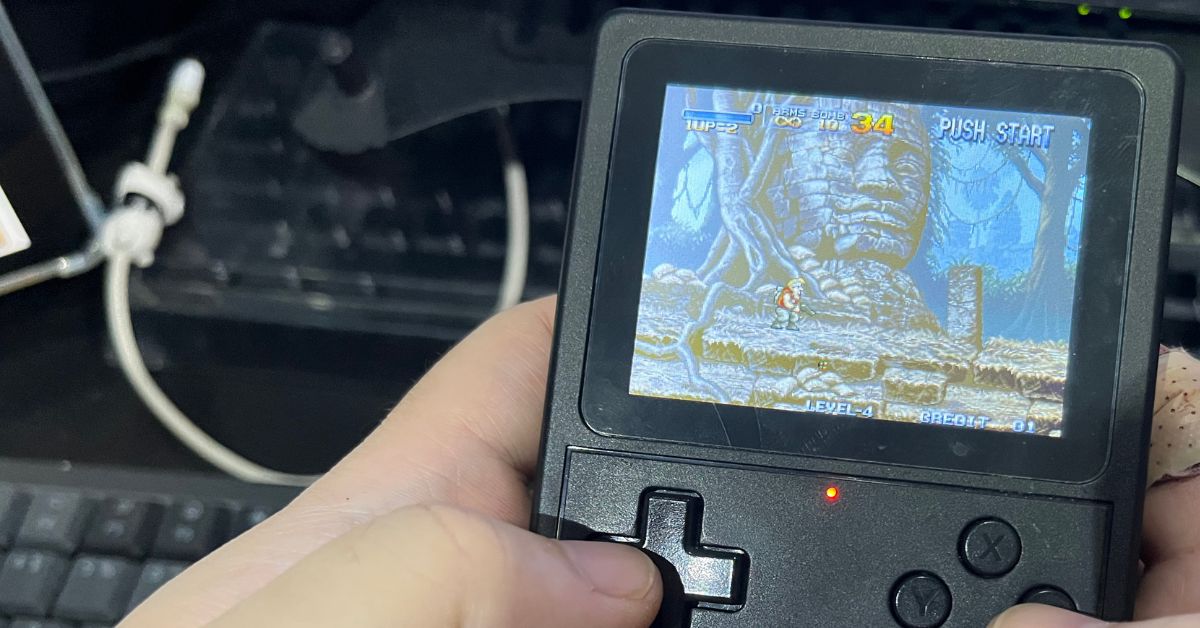
Have you ever caught yourself wishing you could relive the joy of classic Game Boy tunes or the thrill of Super Mario on the go? That’s exactly why the retro handheld console is making a big comeback. These pocket-sized machines, packed with childhood favorites, are more than a blast from the past—they’re a bridge to simpler, stress-free fun where memories meet modern convenience.
But who buys these retro handheld consoles today, and what’s behind their growing popularity? In this article, we’ll dive into why these devices have captured hearts across generations—from nostalgic adults looking for a quick escape to younger fans discovering vintage games for the first time.
What Is a Retro Handheld Console?
A retro handheld console is a portable gaming device built to play classic video games. Depending on the model, it can:
-
Emulate old-school systems like Game Boy, SNES, or Sega Genesis.
-
Include pre-loaded game collections or support physical cartridges.
-
Blend old-school charm with modern tech—think color screens, rechargeable batteries, and sleek designs.
Unlike modern handhelds like the Nintendo Switch or Steam Deck, retro handhelds focus on older 8-bit or 16-bit games, often through emulation or FPGA (Field Programmable Gate Array) technology that mimics original hardware.

Why People Love Retro Handheld Consoles
People aren’t just buying retro handheld consoles to collect dust on a shelf. They’re buying them because they genuinely love them—for reasons that are surprisingly modern, emotional, and practical all at once. Here’s why these devices continue to win hearts across all age groups:
1. Nostalgia That Hits Just Right
There’s something incredibly powerful about playing a game you loved as a kid. Whether it’s Pokémon Red, Sonic the Hedgehog, or Super Mario Land, these games bring back warm memories of rainy Saturdays, school holidays, and simpler times.
-
For many buyers in their 30s, 40s, and even 50s, these consoles are a direct connection to their childhood.
-
It’s not just about playing the games—it’s about reliving the feeling of being 10 years old again.
-
Some even share them with their children, creating a unique bond over cross-generational gaming.
2. Stress-Free, No-Frills Fun
Modern gaming often comes with a lot of baggage—updates, login screens, microtransactions, online drama, and complicated controls. Retro handheld consoles cut out all of that.
-
No downloads or internet needed—turn it on and start playing.
-
Most games are short and sweet. Perfect for a quick break, commute, or coffee shop chill.
-
You don’t need to “git gud.” These games were made for fun, not frustration.
This simplicity makes retro handhelds perfect for people who love gaming but don’t have time (or patience) for today’s massive triple-A titles.
3. Affordable Entertainment
Retro handheld consoles often cost less than a single new game on PlayStation or Xbox. That makes them super appealing to:
-
Casual gamers who want something fun without a major investment.
-
Parents looking for inexpensive gaming options for their kids.
-
Collectors who want to build their retro setup without breaking the bank.
You can find quality retro handhelds like the Anbernic RG35XXSP or Super Pocket Capcom Edition for under $70. Compare that to a $500 console and $70 games—huge savings!
4. A Massive Library of Games in Your Pocket
Some retro handhelds come pre-loaded with hundreds (or even thousands) of games. Others support SD cards where you can load your legally owned ROMs.
-
Play games from the NES, SNES, Sega Genesis, PlayStation 1, and even Nintendo DS—all on one device.
-
No need to buy rare cartridges or hunt through flea markets.
-
Everything is neatly organized in one easy-to-carry console.
This convenience is a game-changer for fans who want quick access to a variety of titles.
5. It’s a Conversation Starter
Let’s be honest—these little consoles are cool-looking. Whether they’re styled like a classic Game Boy or in neon colors with clicky buttons, they’re eye-catching.
-
Show it to someone on a train or in a cafe, and you’ll probably get a “Whoa, is that Sonic?”
-
Collectors love the look of devices like the Analogue Pocket or GKD Mini, which feel like museum pieces.
-
Some people buy multiple handhelds just for the fun of collecting different models, shells, and skins.
For many, it’s not just about gaming—it’s about style and nostalgia rolled into one.
6. Retro Gaming is Trending Again
Thanks to TikTok, YouTube, and Instagram, retro gaming is booming online. Influencers showcase gameplay, unbox consoles, and talk about the charm of pixelated graphics.
-
Gen Z is discovering the magic of old-school games for the first time.
-
Retro gaming aesthetics (think CRT filters and 8-bit soundtracks) are showing up in everything from fashion to music.
-
New indie games designed to look like retro games (e.g., Shovel Knight, Celeste) are keeping the vibe alive.
Retro handheld consoles ride this wave perfectly, giving both old and new gamers the retro experience they’re seeing online.
7. Ideal for On-the-Go Gaming
Retro handheld consoles are built for portability. Their small size, long battery life, and instant-on features make them perfect for:
-
Traveling
-
Waiting rooms or queues
-
Short breaks at work or school
-
Playing before bed without a huge screen or noise
Unlike bulky modern handhelds like the Steam Deck, retro devices are pocket-sized and easy to toss in a bag.
8. They’re Built to Last (Mostly)
Many retro handheld consoles are surprisingly durable. The hardware is simple, and without the need for constant internet connectivity or heavy graphics processing, they often have fewer issues.
-
You don’t have to worry about overheating or battery drain as quickly as with newer systems.
-
Battery life on many models can last 6–10 hours, or even more, depending on the games.
Of course, not all devices are built equally—cheaper models may have plastic-y buttons or lower-quality screens—but well-reviewed ones from brands like Anbernic, Retroid, and Analogue tend to be solid.
9. Modding and Customization
For tech-savvy users, these consoles are incredibly fun to tinker with.
-
You can change themes, install different emulators, or add new features like shaders or save states.
-
Some communities create custom firmware (like Garlic OS or Onion OS) that improve performance and UI.
-
You can even swap shells, buttons, and screens if you’re into customizing the look.
This modding culture adds an extra layer of excitement, especially for hobbyists and tinkerers.
By blending nostalgia, convenience, affordability, and a huge game library, retro handheld consoles have carved out a unique place in the gaming world. They’re more than just a trend—they’re becoming a lasting part of how people of all ages enjoy games, both old and new.
Let me know if you’d like this added to the full article, and I can help stitch it in seamlessly!
Who’s Buying Retro Handheld Consoles?
Nostalgic Adults (30–50+)
-
Looking to revisit their gaming past and relax.
-
Often, game collectors or hobbyists—some restoring full collections.
-
Value both gameplay and devices with an authentic feel or hardware replication (e.g., Analogue Pocket).
Busy Parents & Casual Gamers
-
Want quick handheld fun while commuting or with kids?
-
Appreciate low-cost and durability without modern console expenses.
Gen Z & Young Gamers
-
Discover these systems through retro-loving trends on YouTube, TikTok, and YouTube.
-
The appeal? Old-school charm without nostalgia baggage.
Global Spread
-
High demand emerges from North America, Europe, and Asia-Pacific.
-
Budget models dominate in markets like China and India—with millions of units worldwide.
Device Categories and Examples: What’s Out There for Retro Handheld Console Fans?
Retro handheld consoles come in all shapes, sizes, and price ranges. Whether you’re looking for a fun budget device to relive your favorite 8-bit games or a premium collectible system with high-end display and performance, there’s something out there for everyone.
Here’s a breakdown of the most popular categories and the standout models in each.
1. Budget All-in-One Emulators ($40–$80)
These are plug-and-play devices that come with pre-installed games or support ROMs through microSD cards. They’re ideal for casual gamers, kids, or anyone who wants a simple device to carry around.
Evercade Super Pocket (~$59)

-
Comes in Capcom and Taito editions with licensed games like Street Fighter II and Bubble Bobble preloaded.
-
Has a cartridge slot compatible with the Evercade library (over 300 officially licensed games available).
-
Retro styling with a vertical form factor, great for nostalgia.
Anbernic RG35XXSP (~$70)
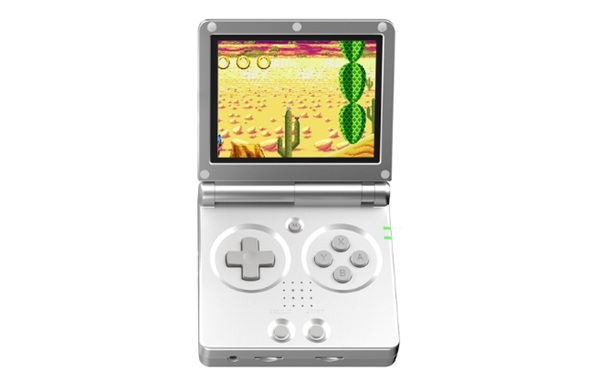
-
Inspired by the classic Game Boy Advance SP design with a clamshell build.
-
Runs Garlic OS, a custom Linux-based system with a clean UI.
-
Supports emulators for NES, SNES, GBA, PS1, and more.
-
Good build quality for the price, and great for beginners.
Powkiddy V90 (~$40)
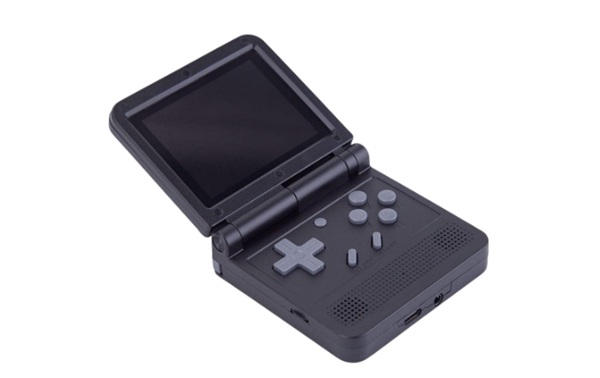
-
Ultra-budget, clamshell design.
-
Emulates basic consoles like NES, SNES, and Game Boy.
-
Preloaded with hundreds of games (note: legality of included ROMs may vary).
-
Great gift option for young gamers or retro newcomers.
2. Mid‑Range Android/Linux Emulation Devices ($100–$250)
These devices strike a balance between affordability and performance. Most can handle up to PlayStation 1 and even some PlayStation 2 or GameCube games, making them ideal for more serious retro gamers.
Retroid Pocket 5 (~$219)
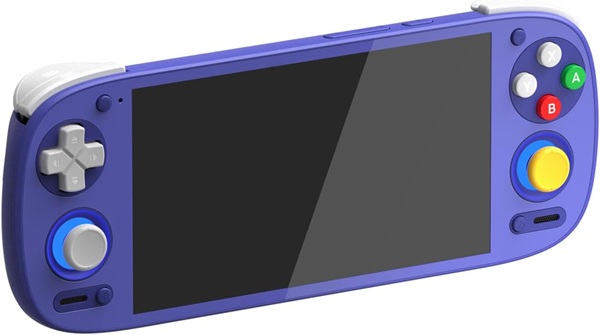
-
AMOLED screen for vibrant visuals.
-
Runs Android 13 with full access to Google Play for emulator apps.
-
Replaceable button layouts, customizable interface, and active cooling.
-
Excellent for PS2, Dreamcast, PSP, and even light GameCube emulation.
GKD Pixel 2 (~$89.99)
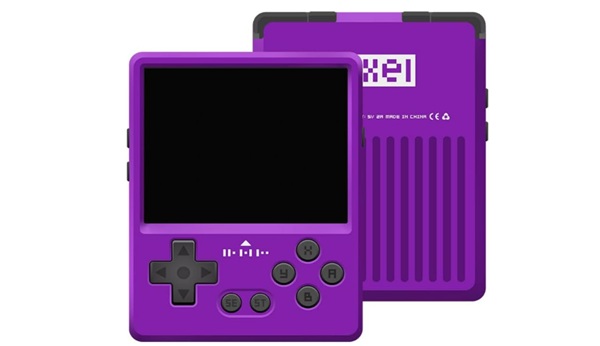
-
Pocket-sized with a chunky retro vibe (reminiscent of Game Boy Micro meets SNES).
-
Runs Linux or Android, depending on the version.
-
Great community support for modding and OS customization.
-
Premium feel with a high-quality screen and responsive buttons.
AYANEO Pocket Micro Classic (~$179–$249)
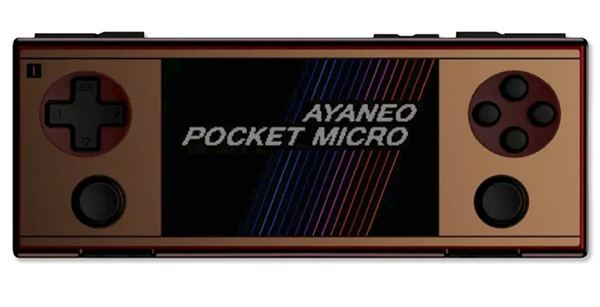
-
Retro Famicom styling with high-end internals.
-
Compact size, high-performance chipsets for emulating up to Dreamcast and PSP smoothly.
-
Supports Windows or Linux, making it a mini PC in your pocket.
-
Ideal for players who love handheld gaming but also want productivity flexibility.
Miyoo Mini Plus+ (~$43.99)

-
Small, square-shaped, and ultra-portable.
-
Fantastic for emulating NES, SNES, GBA, and PS1 with Onion OS support.
-
Strong community with tons of themes, front-end customizations, and shell options.
-
One of the most loved retro handhelds for casual gamers and modders alike.
3. High-End FPGA Handhelds ($200–$300+)
FPGA-based consoles are for those who want the most authentic retro gaming experience possible. These devices don’t just emulate software—they recreate the original hardware behavior at the circuit level, offering nearly lag-free, cycle-accurate performance.
Analogue Pocket (~$339.99)
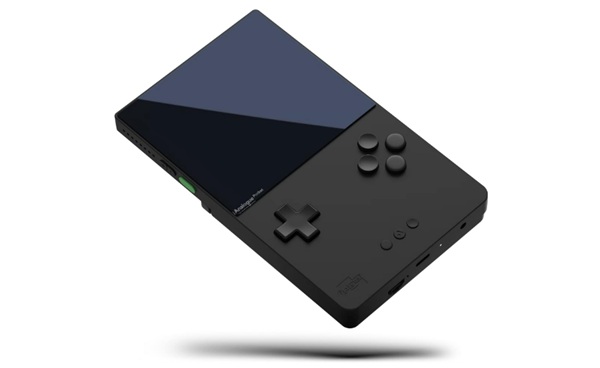
-
The gold standard of FPGA handhelds.
-
Natively supports original Game Boy, Game Boy Color, and Game Boy Advance cartridges.
-
Adapters are available for other platforms like Game Gear and Neo Geo Pocket.
-
Crystal-clear 3.5” LCD with a 1600×1440 resolution (10x the original Game Boy).
-
Stunning build quality, with built-in tools for developers and musicians.
Mister FPGA Handheld Projects (DIY, varies $300+)
-
Community-built handhelds using MiSTer FPGA hardware.
-
Supports a wide range of systems: NES, SNES, Genesis, Neo Geo, and more.
-
Not commercially packaged—intended for tech enthusiasts and hobbyists.
-
Offers the most accurate retro gameplay possible outside original hardware.
⚖️ Quick Comparison Table
| Device | Price Range | Emulation Level | OS/Software | Unique Feature |
|---|---|---|---|---|
| Evercade Super Pocket | $59 | Licensed + Cartridge | Proprietary OS | Legal game library, cartridge support |
| Anbernic RG35XXSP | $70 | Up to PS1 | Garlic OS | Game Boy Advance SP-style clamshell |
| Retroid Pocket 5 | $219 | Up to PS2/GameCube | Android 13 | AMOLED screen, customizable design |
| GKD Pixel 2 | $149 | Up to Dreamcast | Linux/Android | Compact retro design, solid build |
| AYANEO Pocket Micro | $179–$249 | Up to Dreamcast/PSP | Linux/Windows | Retro design with high-end specs |
| Miyoo Mini Plus+ | $65–$85 | Up to PS1 | Onion OS | Tiny size, deep modding support |
| Analogue Pocket | $220 | FPGA-based (GB/GBC/GBA) | Analogue OS | Hardware-accurate gameplay, cartridge slot |
What Buyers Prioritize
| Feature | Why It Matters |
|---|---|
| Game Library Access | Emulation gives huge range of classic games without cartridges. |
| Build & Display | Bright screens, sturdy buttons, sleek design matter. |
| Portability & Battery | Light weight and long battery life make for on-the-go fun. |
| Price & Value | Budget-friendly retro handhelds (<$80) attract wide audiences. |
| Hardware Authenticity | FPGA models mimic original console experience closely. |
Challenges in the Retro Handheld Space
While retro handheld consoles are loved by many, the space isn’t without its pain points. As the market grows, several issues continue to challenge both users and manufacturers. Here’s a closer look at what’s holding some retro devices back:
1. Legal Gray Areas with ROMs
One of the biggest headaches in the retro handheld console world is legality. Many devices come preloaded with thousands of games, but:
-
These games are often not legally licensed, especially when they’re sold from lesser-known brands.
-
While emulation itself is legal, distributing ROMs of copyrighted games is not.
-
This makes it tricky for buyers to know whether they’re supporting something shady or not.
Some companies like Evercade avoid this by licensing all games, but most others don’t—leaving the consumer to figure it out.
2. Inconsistent Build Quality
Not all retro handhelds are created equal. With so many new models launching each year, quality control is all over the place:
-
Some cheap devices feel plastic-y or break easily.
-
Poor buttons, weak d-pads, or mushy triggers can ruin the gaming experience.
-
Low-end screens might have bad viewing angles or ghosting issues, especially during fast-paced games.
Reviews on YouTube and Reddit are often essential before buying, because looks can be deceiving.
3. Learning Curve for New Users
Many retro handhelds—especially Linux- or Android-based models—are not plug-and-play. Users might need to:
-
Flash a custom OS (like Onion OS or Garlic OS).
-
Install emulators manually.
-
Source and transfer their own ROMs legally.
-
Adjust emulator settings (like frame skip, aspect ratio, or save state behavior).
That’s a lot of setup for someone who just wants to play Tetris or Mario Kart quickly. This complexity can scare off less tech-savvy gamers.
4. Fragmented Market and Too Many Choices
The market is flooded with options. Every few months, new models from Anbernic, Powkiddy, Retroid, GPD, and others pop up—and many look similar but have minor spec differences.
-
Consumers often feel overwhelmed by choice paralysis.
-
It’s hard to tell which models are truly “next-gen” versus minor upgrades.
-
Some companies have poor documentation or unclear firmware updates, adding to the confusion.
Unless you follow the retro handheld scene closely, it’s easy to buy something outdated or underwhelming.
5. Battery Life Can Be Hit or Miss
Battery performance varies wildly across different consoles:
-
Some last 8–10 hours on older systems like NES or Game Boy.
-
But others drop to just 2–4 hours when emulating heavier consoles like PSP or Dreamcast.
-
Cheaper devices often lack power optimization or fast charging.
Gamers who want to use their console on-the-go may end up disappointed if they don’t research battery life beforehand.
6. Limited Customer Support
Many of the popular retro handheld brands are based in China and have limited global support channels:
-
Returns, repairs, or refunds can be slow or unavailable.
-
Firmware updates may not be well-translated or documented.
-
Some official websites are hard to navigate or out of date.
This creates trust issues, especially for users who expect the kind of service they get from bigger gaming brands like Nintendo or Sony.
7. Lack of Optimization for Some Systems
Even mid-range handhelds often struggle with emulating newer or trickier platforms:
-
Nintendo DS (because of dual screens)
-
PlayStation 2 and GameCube (due to power demands)
-
Sega Saturn (historically difficult to emulate well)
Emulation is constantly improving, but some consoles just don’t run smoothly yet unless you’re using high-end or PC-grade hardware.
Despite these hurdles, the retro handheld scene continues to grow thanks to passionate fans and an active community of developers and modders. But these challenges are important to keep in mind—especially for anyone new to the space or looking for a frustration-free experience.
Who Should Get a Retro Handheld Console?
Retro handheld consoles aren’t just for hardcore gamers or collectors—they actually fit into a wide range of lifestyles and interests. Whether you’re reliving old memories or just looking for fun on the go, here’s a closer look at the types of people who’ll get the most joy out of these nostalgic little devices:
Nostalgic Souls
If you grew up playing the Game Boy, NES, Sega Genesis, or early PlayStation titles, a retro handheld console is like holding a time machine in your hands.
-
Revisit iconic games like Super Mario Bros., Pokémon Red, The Legend of Zelda, or Sonic the Hedgehog.
-
Feel the tactile joy of physical buttons and d-pads—not just swipes and taps on a phone screen.
-
Many consoles are designed to look and feel like vintage systems, bringing back the magic of the ’80s, ’90s, and early 2000s.
For those looking to reconnect with childhood games or share them with their own kids, it’s a heartwarming and affordable choice.
Busy Commuters & On-the-Go Parents
Not everyone has time to sit down in front of a TV or PC for a full gaming session. Retro handhelds are perfect for short breaks and daily downtime.
-
Most consoles are lightweight and pocket-sized, making them easy to use during subway rides, coffee breaks, or waiting in school pickup lines.
-
Battery life for simple games can last several hours—no charger stress.
-
Quick sleep/wake functions mean you can pause and resume instantly, just like a modern smartphone.
If you’ve only got 10–15 minutes at a time to spare, retro games (which were designed for short sessions) are ideal companions.
Collectors & Hardware Enthusiasts
Some players care just as much about the device as they do about the games. For these fans, a retro handheld console is a beautiful fusion of form and function.
-
FPGA-based consoles like the Analogue Pocket replicate original hardware nearly perfectly—no input lag or glitchy emulation.
-
Some limited-edition handhelds are collector’s items, with themed shells, transparent designs, or metal builds.
-
Many enjoy modifying or customizing their devices with new shells, buttons, themes, and OS tweaks.
If you appreciate thoughtful engineering, retro tech design, or just love tinkering, this space is a treasure chest of opportunity.
Value Seekers
Gaming doesn’t need to cost hundreds of dollars every year. Retro handhelds offer long-term fun for a fraction of the cost of modern consoles.
-
Budget models start as low as $40–$70 and come preloaded or ready to load with thousands of classic games.
-
No subscriptions, in-game purchases, or online fees—just pure offline fun.
-
ROM file sizes are tiny, so even low-spec hardware can run hundreds of games.
For families, students, or anyone watching their budget, it’s an incredible bang for your buck.
Gen Z Explorers & Trendsetters
Believe it or not, many Gen Z gamers are just discovering the joys of retro gaming for the first time—and loving it.
-
TikTok, YouTube, and Reddit have fueled a retro gaming revival, with influencers showing off their custom consoles and favorite classics.
-
Devices like the Miyoo Mini Plus+ and Retroid Pocket 4 are as Instagrammable as they are playable.
-
There’s something cool about low-res pixel art and 8-bit music—it stands out in today’s high-def, hyper-real world.
For digital natives, retro handhelds are both a fun experience and a way to join an active, stylish gaming community.
Bonus: Developers, Modders & Tinkerers
Let’s not forget the tech-savvy crowd who love to customize their experience from top to bottom.
-
Many retro consoles are open-source or community-driven, like the Miyoo Mini Plus+ running Onion OS.
-
You can install custom firmware, front-ends, artwork, themes, and even build your launcher.
-
Some devices let you develop or port your games, turning your console into a mini creative studio.
If you’re into coding, UI design, or just enjoy total control over your gadgets, these handhelds offer plenty of room to experiment.
Conclusion
A retro handheld console isn’t just a gaming gadget—it’s a ticket back to fond memories, a portable stress-relief tool, and a showpiece that celebrates gaming’s past. Whether you’re a 40-year-old revisiting old favorites, a parent seeking simple pocket entertainment, a Gen Z newcomer drawn by retro vibes, or a collector devoted to precise hardware, there’s a model for you.
These devices fit beautifully where modern gaming can’t: full of nostalgia, easy to carry, and generally affordable. Despite small challenges—legal issues, supply chain hurdles—this sector looks strong. With growing innovation, global interest, and cross-generational appeal, retro handheld consoles are here to stay—and to delight.





